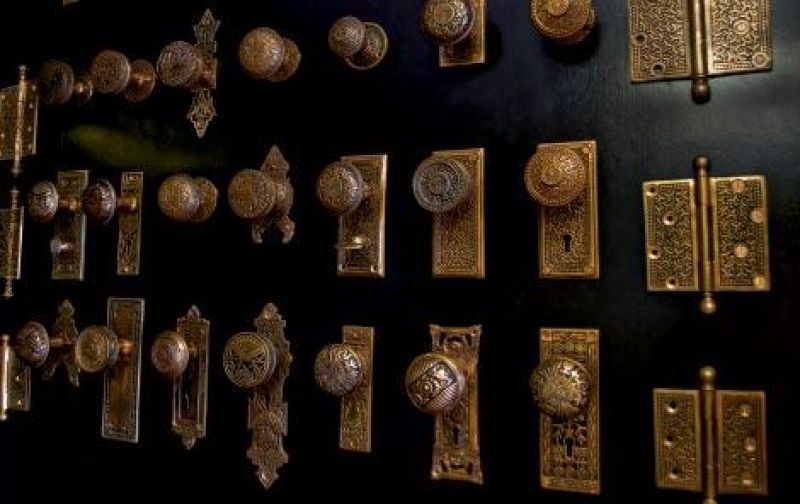
Fifteen years ago, when Brad Williams set out to restore a circa-1900 house on New Street, he didn’t expect to unlock a new career. But as he struggled to find period-appropriate doorknobs, he latched onto the idea of establishing an antique hardware reproduction business. Now, Charleston Hardware Company deals precise replicas to architects, designers, homeowners, and historians, as well as restores and refinishes antique hardware.
“Hardware is one of the main finishes in an old house, so it should be a true representation of the original,” says Williams. His company’s dedication to authenticity has led to government and museum projects throughout the U.S., including Historic Charleston Foundation’s Nathaniel Russell and Aiken-Rhett houses and the Rutherford B. Hayes mansion in Ohio.
Working from an ever-expanding collection of original locks, handles, knobs, doorbells, and more, Williams collaborates with foundries in India to analyze metal content and create molds. Then copies are cast in iron, brass, bronze, and the like. “I want to have an entire suite—maybe 20 different working pieces in a particular pattern—before reproducing it,” says Williams. The company’s current line, on display at its showroom and charlestonhardwareco.com, includes 17 reproduction suites from the Colonial, Victorian, and Art Deco eras.
Come On In!
The company makes 17 hardware patterns based on antique suites found at flea markets, on eBay, and more. Here are three favorites:
➼ Rice: A popular seller due to Charleston’s rice trade, this 1885 pattern (shown above) was originally made by Yale and Town of Stamford, Connecticut.
➼ Egg & Dart: Originating in ancient Roman/Greco architecture, with the egg representing life and the dart death, this design can be seen at Drayton Hall. Charleston Hardware used a circa-1900 pattern for reproduction.
➼ Oriental: An open fan, rising sun, and bamboo are seen in this 1885 pattern first made by Connecticut’s Brandford Lock Works.